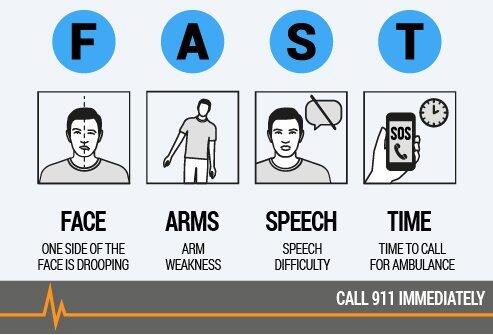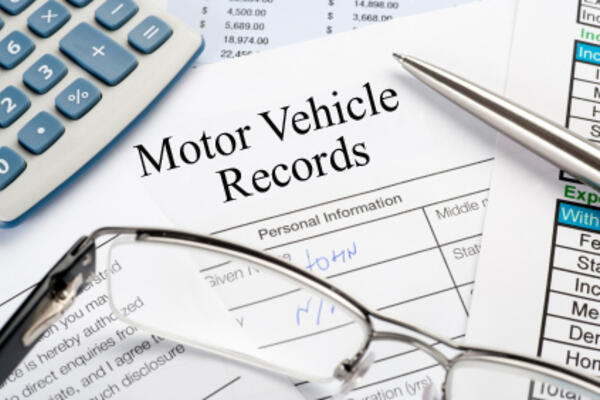The perfect gift this Valentine’s Day is the gift of heart health. Along with Valentine’s Day, February marks American Heart Month, a great time to commit to a healthy lifestyle and make small changes that can lead to a lifetime of heart health.
Cardiovascular disease (CVD)—including heart disease, stroke, and high blood pressure—is the number 1 killer of women and men in the United States. It is a leading cause of disability, preventing Americans from working and enjoying family activities. CVD costs the United States over $300 billion each year, including the cost of health care services, medications, and lost productivity.
RECOGNIZING A STROKE
Sometimes symptoms of a stroke are difficult to identify. Unfortunately, the lack of awareness spells disaster. The stroke victim may suffer severe brain damage when people nearby fail to recognize the symptoms of a stroke.
Now doctors say a bystander can recognize a stroke by asking three simple questions:
S *Ask the individual to SMILE.
T *Ask the person to TALK and SPEAK A SIMPLE SENTENCE (Coherently)
(i.e. It is sunny out today)
R *Ask him or her to RAISE BOTH ARMS.
If he or she has trouble with ANY ONE of these tasks, call emergency number immediately and describe the symptoms to the dispatcher.
New Sign of a Stroke -------- Stick out Your Tongue Ask the person to ‘stick out their tongue'. If the tongue is 'crooked', if it goes to one side or the other, that is also an indication of a stroke.
Canada Still Facing ELD Deadline without Product Certification
Transport Canada has established a June 12, 2021 deadline for compliance with new regulations for Electronic Logging Devices to record driver hours of service, but the agency is behind schedule on using third party certification of allowed ELDs.
According to an industry briefing provided January 19 by Mike Millian, President of the Private Motor Truck Council of Canada, all ELDs allowed for use in Canada must be certified by an independent third party and posted on the Transport Canada website. But to date only one certification body (FPInnovations) has been authorized to evaluate ELDs, and no ELDs are currently certified for use in Canada.
TC changed the technical standards and testing procedures for ELDs on October 26, 2020. It takes 4-6 weeks to certify a device after an ELD manufacturer applies for certification. Also, no ELDs are currently under consideration for certification. So, at the earliest it will be the middle of March before any ELDs might be certified.
The Private Motor Truck Council of Canada has asked TC for a delay of enforcement for 6-12 months to allow for appropriate certification of ELDs. NPTC has also requested an enforcement delay for vehicles in cross-border traffic. But to date, TC has indicated it will stick to its June 12, 2021 deadline for compliance even though there are no certified devices.
The ELD mandate applies to all federally regulated motor carriers that operate in Canada, meaning inter-provincial or international transportation. Vehicles rented for 30 days or less are excluded from the ELD requirements. Also, it is not certain whether ELDs that meet U.S. standards will be certified as compliant with the Canadian rules.
How Often is a Motor Carrier Required to Review the Motor Vehicle Record of a Driver that Operates a Commercial Motor Vehicle?
The Federal Motor Carrier Safety Regulations requires a motor carrier qualifying a new driver to obtain and review the motor vehicle record of the driver within 30 days of the date of hire CFR 391.23. As a Better Business Practice it is recommended that the Motor vehicle record be obtained and reviewed prior to making an offer of employment to the driver applicant.
After the driver is qualified the regulations require that at least once every 12 months that the motor carrier make an inquiry into the driving record of each driver it employs, covering at least the preceding 12 months, to the appropriate agency of every State in which the driver held a commercial motor vehicle operator's license or permit during the time period CFR 391.25.
Effective January 30, 2015 when a driver renews a medical certification the motor carrier must obtain a new MVR for the state of licensure with the medical certification information on the MVR.
So how will a carrier verify that a driver is physically qualified? This is done by obtaining a copy of the driver’s driving record and including it in the driver’s qualification file. Do keep in mind that in addition to the current requirement that motor carriers obtain and review each driver’s driving record once a year, motor carriers will also have to make sure the driver’s record includes valid and current medical certificate/card information.
This means that every time a medical certificate/card is renewed and turned in to the driver licensing agency, the motor carrier will need to obtain a new driving record that reflects this current information and place it in the driver’s qualification file.
The motor carrier will need to take timing into account when obtaining the new MVR that reflects the driver’s current medical status. Once a driver turns in his/her medical certificate/card to the state licensing agency, the state has 10 days to enter this information into the driver’s driving record. During this time the motor carrier must keep a copy of the driver’s medical certificate/card in the driver’s qualification file. Regulations allow a motor carrier to maintain this copy of the certificate/card as proof of medical qualification for a maximum of 15 days from the date it was issued.
The original motor vehicle record that was used to qualify the driver shall be retained for the duration of employment and 3 years after termination. The motor vehicle records obtained annually after hire can be purged from the files 3 years after the date of issuance.
If a Commercial Vehicle driver had the
following violation……. the likelihood
of the driver
being in an
accident is
increased by
Reckless Driving violation 325%
Improper Turns violation 105%
Improper or Erratic Lane Change conviction 100%
Failure to Yield Right of Way conviction 97%
Improper Turn conviction 94%
Failure to Keep in Proper Lane conviction 91%
Improper Lane Change violation 78%
Failure to Yield Right of Way violation 70%
Driving Too Fast for Conditions conviction 62%
Any conviction 56%
Speeding More Than 15 Miles over Speed
Limit conviction 56%
Reckless / Careless / Inattentive / Negligent
Driving conviction 53%
Following too closely conviction 50%
Improper Lane / Location conviction 47%
Any moving violation 41%
Following Too Close violation 40%
Speeding violation 35%
Failure to Obey Traffic Control Device
violation 30%










